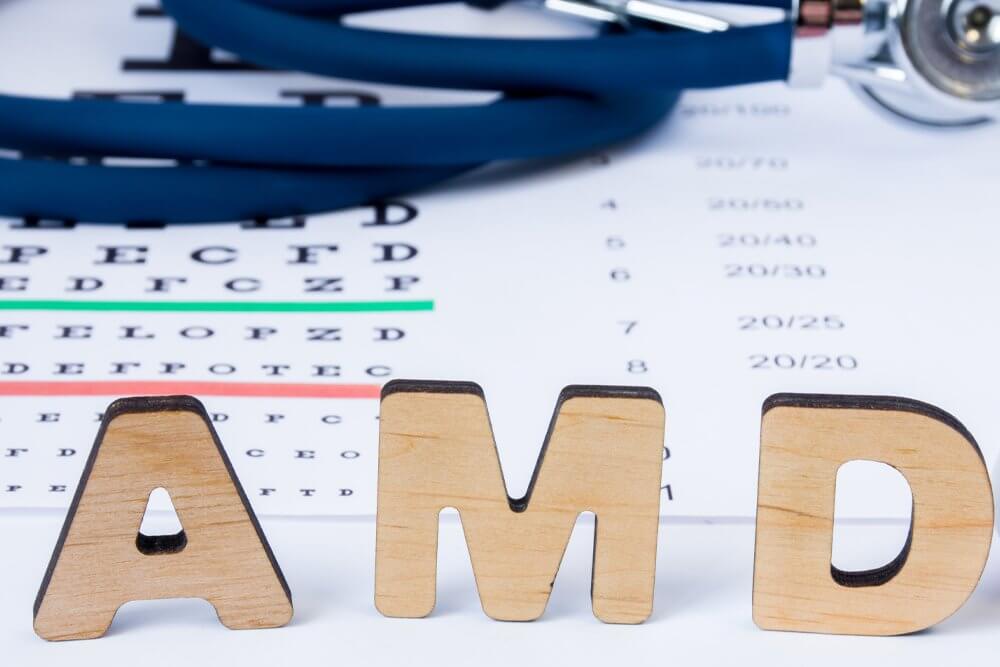Age Related Macular Degeneration
Posted by: Invision Optometry in Category Macular Degeneration

Age related macular degeneration also known as AMD, is the leading cause of vision loss in people over 60. It is an eye disease that blurs the sharp, central vision you need for activities such as, driving, reading, or writing. This happens when the small central portion of the retina, known as the macula, deteriorates affecting fine detail. For some, AMD advances so slowly, vision loss does not occur for a very long time. In others, the disease advances quickly, and can lead to severe vision loss in one or both eyes. Although there is no cure for AMD, there are things you can do to reduce your risk, and possibly slow down the progression of the disease. In fact, getting an annual eye exam is one of the best ways to reduce your risk and protect your vision. That’s because when detected early, age related macular degeneration can often be managed. With this in mind, here is what you need to know about AMD.
AMD, is the leading cause of vision loss in people over 60.
The Macula
Made up of millions of light sensing cells, the macula provides your sharp central vision. It is the most sensitive part of the retina, which is located in the back of the eye. The macula is the place where light is focused by the structures in front of the eye (cornea and lens). It takes a picture that is sent to the brain, where vision is completed. The health of the macula is extremely important because it determines our ability to read, recognize faces, drive, watch TV, use a computer, and perform any other visual task that requires us to see fine detail. When the macula is damaged, your central vision may appear blurry, distorted, or dark. Unfortunately, many people are not diagnosed with age related macular degeneration until the later stages of the disease, when treatment is not as effective. This is why getting an annual comprehensive eye exam is so important! Early diagnosis and treatment may help control progression of the eye disease, and stabilize or even restore some vision.
The macula provides your sharp central vision.
AMD becomes increasingly common in older age.
Stages of AMD
AMD becomes increasingly common in older age. In fact, 1 out of every 100 people between the ages of 65 to 75 has age related macular degeneration (NCBI, AMD Overview). There are three stages of AMD defined in part by the size and number of drusen under the retina. Drusen are yellow deposits which are made up of lipids, a fatty protein. Drusen increases a person’s risk of developing AMD. If you have drusen, chances are you have no symptoms. Often, a routine eye exam will incidentally reveal their presence. This is how early AMD is detected.
Early AMD is diagnosed by the presence of medium-sized drusen. Those with early AMD typically do not have vision loss. People with intermediate AMD usually have large drusen, pigment changes in the retina, or both. Again, changes like these can only be detected during an eye exam. This stage of macular degeneration may cause some vision loss, but most people will not experience any symptoms. In addition to drusen, those with late AMD have noticeable vision loss from damage to the macula.
There are two types of AMD, dry and wet. In dry AMD, there is a gradual breakdown of the light sensitive cells in the macula, and of the supporting tissue beneath the macula. These changes cause vision loss. In wet AMD, abnormal blood vessels grow underneath the retina. These vessels can leak fluid and blood, which can lead to swelling and damage of the macula. The damage can be rapid and severe, unlike the more gradual course of dry AMD.
Preventing AMD
While there is no cure for age related macular degeneration, there are a number of things you can do to reduce your risk of getting the disease and experiencing vision loss. The earlier you get a diagnosis, the greater the chance that treatment will help. Which is why having regular eye exams is so important. Aside from having an eye exam every year, living a healthy lifestyle that includes eating a balanced diet, getting regular exercise and not smoking, can reduce your risk significantly. Other important prevention tips include protecting your eyes from harmful UV rays, keeping your blood pressure in check and lowering your cholesterol levels.
The single most important thing you can do to detect AMD is set an annual eye exam.
AMD Detection
The single most important thing you can do to detect AMD is set an annual eye exam. A dilated comprehensive eye exam will help to detect any eye problems at their early stages, when they’re most treatable. During our comprehensive eye exam, we determine your prescription for eyeglasses or contact lenses, and check your eyes for common eye diseases. Additionally, we assess how your eyes work together as a team and evaluate them as an indicator of your overall health. If you have questions about our eye exam or need more information, call us today at (619) 222-2020 to learn how we can help.


